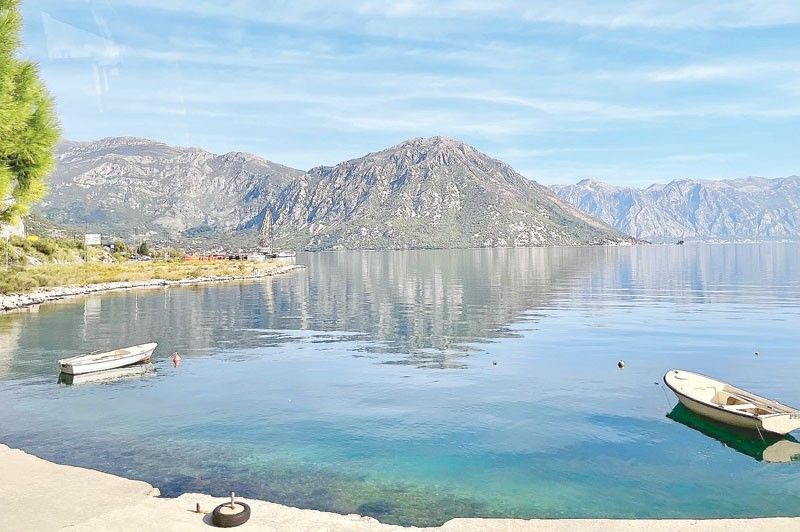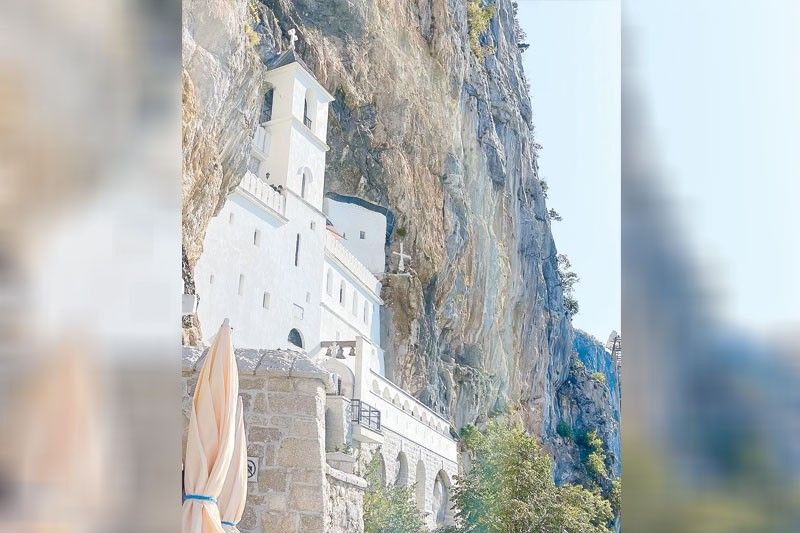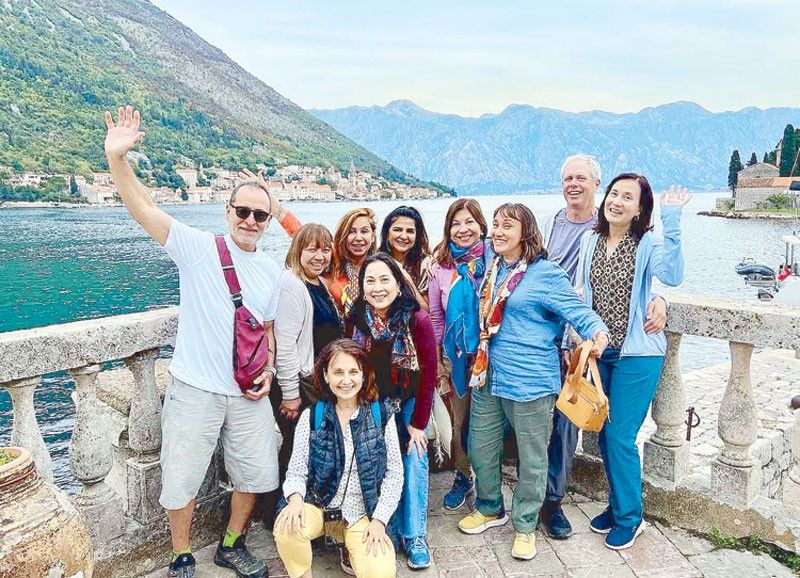Mesmerizing Montenegro

Despite having endured conflicts, Montenegro, a country in the Balkans 22 times smaller than the Philippines, is a postcard of tranquility. Like a visual lullaby that makes you want to recline and relax, Montenegro is all about soothing, mesmerizing scenery. Mountains coated in evergreen trees, glacial lakes with unruffled, clear waters and virgin forest parks.
Complementing the tranquility of the scenery are fortress towns at the foot of the mountains like Kotor, or by the sea, like Perast.
And to match the scenery are “the equally beautiful and kind people who inhabit this piece of heaven on earth,” according to Motenegro’s Honorary Consul to the Philippines Vanessa S. Pastor Ledesma, who has visited the country five different times in the last four years. Indeed, no matter how picturesque a country is, the bigger picture includes its people.
Our intelligent guide Dino Pepic told us that Montenegrins have had “to endure very hard times.” And yet I found them warm, friendly, and hospitable to the best of their ability, not at all hardened by the tough times they have had to endure many years ago.

“Beauty abounds in this small Balkan country of 600,000 people,” says my classmate Alexandra “Sandy” Lamb Moran, who was one of six girls from our Assumption Convent high school class who met up in the Balkans for a special reunion: Therese Gamboa, Maite Duarte, Andie Recto, Ramona Diaz and myself. We were also with some friends and relatives: Maite’s husband Ricardo Pastor, Therese’s sister Cathy Gamboa-Engstrom and her husband Eric, and her colleague Gulzar Aziz.
“It was an unexpected magical gem of a country to explore — with its rugged majestic mountains, its beautiful glacial lakes, peaceful seaside resort towns, historical medieval villages, magnificent monasteries and monuments, and narrow strip of beaches along the Adriatic coastline,” continues the well-travelled Sandy. “I particularly loved Kotor, a fortified medieval town on Montenegro’s Adriatic coast, in a bay near the limestone cliffs of Mt. Lovcen. Characterized by its winding streets and squares, this medieval village has several Romanesque churches. I loved Montenegro!”
Though there are churches, there are also several mosques. According to Dino our guide, parts of Montenegro are “a Middle Eastern version of Europe.”
***
A visit to the Black Lake in Zabljak, reportedly the highest situated Balkan town, also reminded me of Lake Tahoe in Nevada, and Bavaria. The lake actually consists of the Big Lake and the Small Lake, which are connected by a narrow strait that dries up during the summer, creating two separate bodies of water.
The road to the lake is flanked by giant pine trees and vendors selling fig preserves and jams, wood carvings and other native souvenirs. At the end of the road, whoa! You see not a forest but a breathtaking lake. Not a “Black Lake” but an emerald lake, ringed by ivory-colored sand, with pine-covered Mt. Durmitor as its crown. It’s a lake but actually looks like a beach at certain angles because of the ivory-colored sand that outlines it.
We also visited the Ostrog Monastery, whose upper monastery is etched 900 meters up on the nearly vertical mountain of Ostrog. The journey up the winding road to the sacred place treated us to a spectacle of color, as the trees on both sides of the road had turned to gold, orange and brown.
The Ostrog Monastery, of the Serbian Orthodox Church, is dedicated to Saint Basil of Ostrog. The monastery was founded by Vasilije, the metropolitan bishop of Herzegovina, in the 17th century. His body is enshrined in a reliquary kept in the cave-church dedicated to the Presentation of the Mother of God to the Temple.
One of the most frequently visited in the Balkans, the monastery attracts over 100,000 visitors a year from all parts of the world, either individually or in groups. It is said to represent the meeting place of all confessions: the Orthodox, the Catholics and the Muslims. According to the stories of pilgrims, by praying by his body, many have been cured and comforted with their difficulties in life.
Our group prayed in a tiny chapel in front of the relic of Saint Basil, which is reportedly uncorrupted.

***
Dino also shared with us fast facts about Montenegro: It reportedly has the most species of flora and fauna in Europe; the best economic growth in Europe; and the “best tap water in the world.” The country now also boasts the tallest people in the world. With the Montenegrins’ average height of 183 cm., they have reportedly displaced the Dutch as the world’s tallest.
If Montenegro in the Balkans is a country on your bucket list of places to visit, it’s a good idea not to keep it at the bottom of the bucket for too long. Visit it while it’s still pristine and not yet “discovered” by the madding crowd.
(You may e-mail me at joanneraeramirez@yahoo.com. Follow me on Instagram @joanneraeramirez.)
- Latest




























